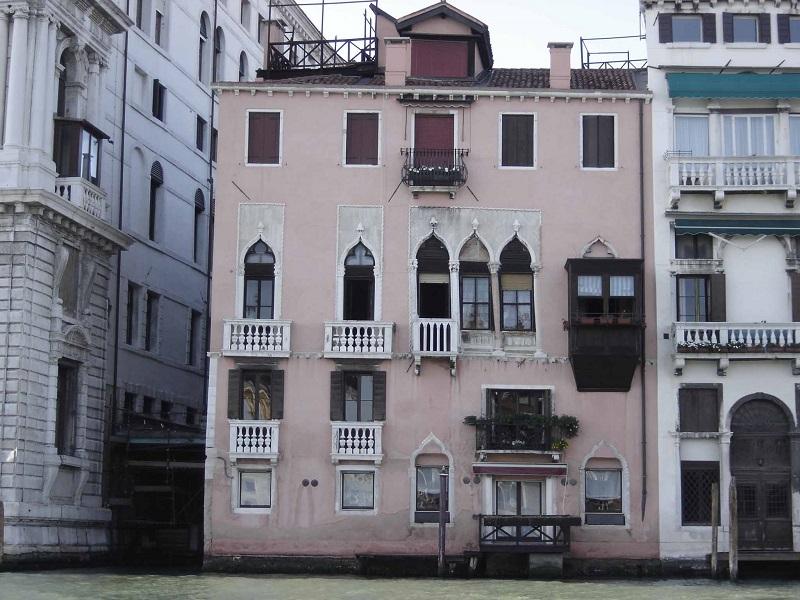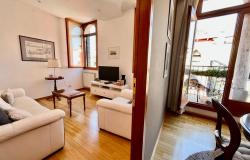What could be more appropriate for Venice, city of romance, than to have a season of operas in a palazzo on the Grand Canal? There can be no more magical experience than to travel in the dark by boat to Santa Maria del Giglio and walk through a couple of dimly lit alleyways over small bridges to Palazzo Barbarigo Minotto, its grand salon on the piano nobile lit by hundreds of candles, and the twinkling lights reflected by the water glittering though the ancient distorted glass of the floor-to-ceiling windows.
We were about to see a performance of La Traviata (The Fallen Woman), the story of Violetta, (Dumas’s La Dame aux Camélias) a courtesan, and her tragic love for Alfredo, the son of a noble family. Act 1 is a party scene, and we, the audience, were a part of that soirée, joining in the brindisi (toast) as Violetta handed out glasses of prosecco as she sang and swirled around the room, spectacularly dressed in art nouveau style with a sparkling dress and train, and a magnificent head dress of curled long feathers. The pair had such fine voices – such volume and such crystal clear high notes – that it must have been heard the entire length of the Grand Canal, and the interaction between the singers, the musicians and the audience offered the thrill of experiencing the opera from the inside.
The joyful music of the first act came to an end and we were shepherded into another grand room for drinks, prosecco mainly, whilst the small orchestra moved to our next venue, the Tiepolo room. Yes, it really did have a ceiling fresco by Tiepolo to gaze at, as the story continued with Alfredo’s father begging Violetta to renounce him for the good of the family name.
Act Three, of course, was the bedroom scene with the reconciliation of the two lovers just before Violetta’s tragic death. We moved upstairs to a boudoir, a rather shabby 18th century style room with a large bed on a dais at the far end. Somehow the faded walls and flaking paint added to the sad atmosphere, being all around us instead of sitting in rows at a theatre looking at a stage set.
I was there with friends, some of whom weren’t familiar with opera, but were still caught up in the tide of emotion throughout Verdi’s opera in a way that probably wouldn’t have happened if we had been more observers than participants. And anyway, Verdi arguably wrote all his best tunes for La Traviata.
We wandered back to the landing stage of the vaporetto night service with a handful of other opera-goers. We were still all humming or singing with the sheer joy of the whole experience, not even dampened by a passing shower of rain. When the boat arrived, we were the only passengers, so we waltzed to the tunes as we zigzagged along the Grand Canal.
It’s ironic that the very first performance of la Traviata in 1853 was at La Fenice in Venice, but it was deemed a failure. This is probably because the soprano was an impossibly large lady, and therefore not a credible sophisticated and popular courtesan. Only one critic had the foresight to see that the music would live forever. For those of us who were privileged to be there that evening, the performance will indeed be with us for the rest of our lives.
 Photo credit: http://www.musicapalazzo.com/
Photo credit: http://www.musicapalazzo.com/
Musica a Palazzo is staged at Palazzo Barbarigo Minotto. This season there are three operas: The Barber of Seville, Rigoletto, and La Traviata.
Membership card €75 (This is instead of a ticket.)
Further information: www.musicapalazzo.com














